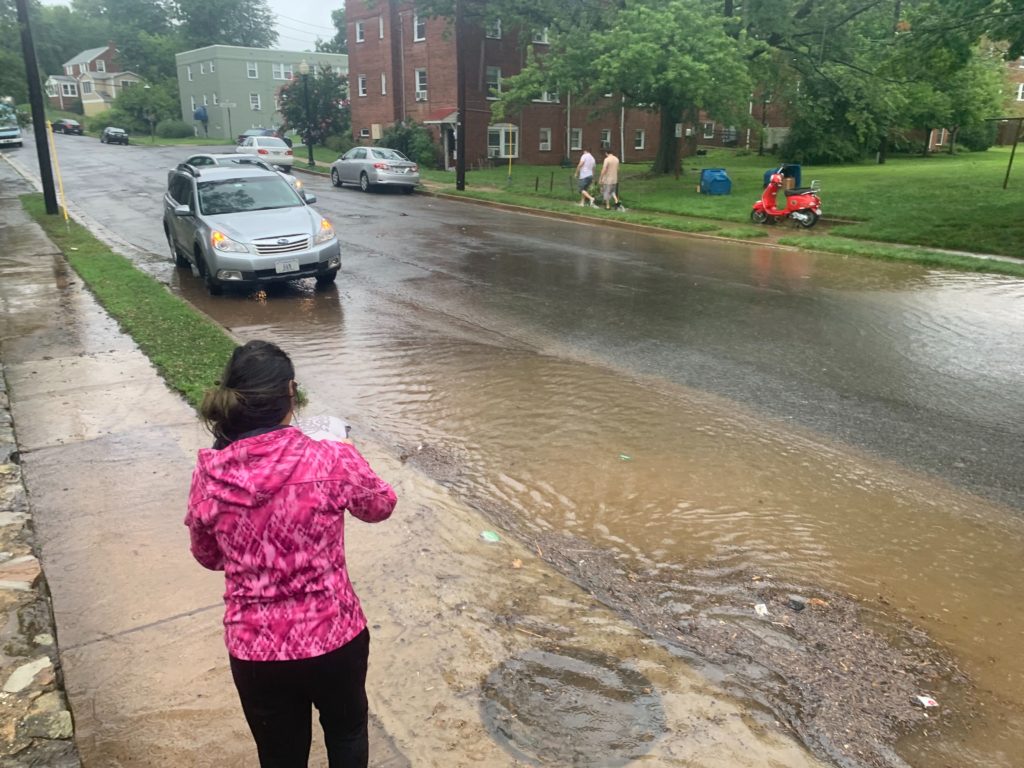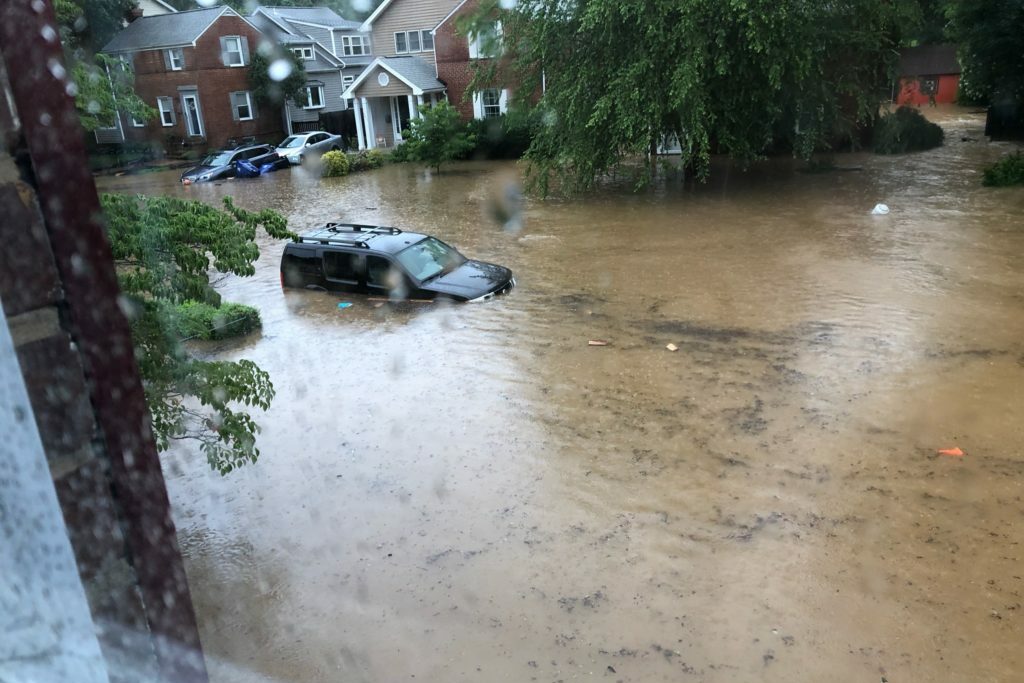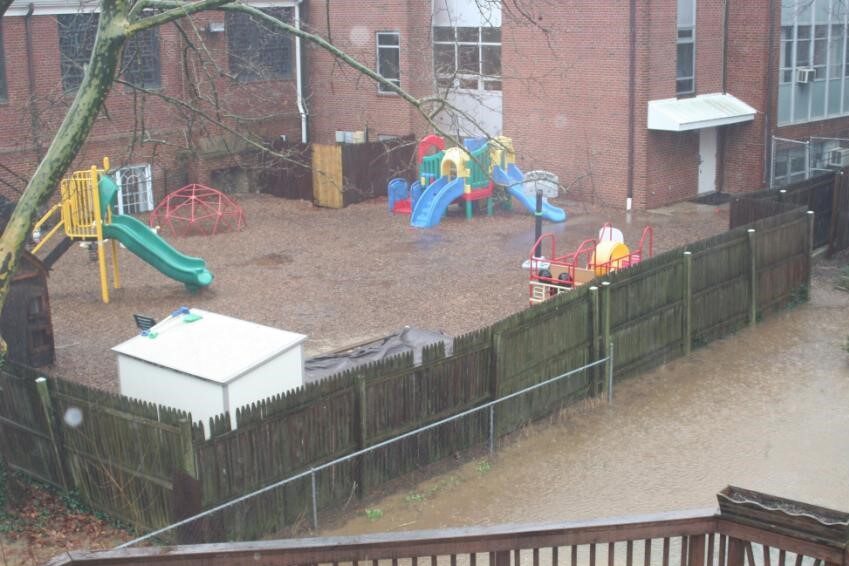This spring, Arlington County began buying up properties in the Waverly Hills area to combat flooding.
Already, despite some concerns about how the program would work, three residents have agreed to sell their homes. The county will tear them down and replant the land so water has a place to flow during large rain storms.
All seven Arlington County Board candidates — six of whom are vying for the support of the local Democratic party this primary — say the county needs to change its land-use policies and get more people on board with adding stormwater infrastructure in their backyards, in order to make neighborhoods more resilient to a predicted increase in flooding.
“The July 2018 and 2019 floods in particular really drove this home for us — we had some real life-safety issues pertaining to flooding,” Susan Cunningham said in a forum hosted by nonprofit advocacy group EcoAction Arlington last week.
“[It] highlighted that, not only because of climate change but really because of lack of long-range planning, we have very outdated stormwater management systems that we don’t have a budget to improve,” she continued. “We do have a lot of catch up to do.”
Since the floods, Arlington County has taken steps to manage stormwater beyond buying homes for flood relief.
Starting next year, Arlington will fund its stormwater management plan with a stormwater utility fee. The county will charge property owners a rate based on how much of their property is covered in hard surfaces, like roofs and driveways. (Currently, it is funded by a tax based on property assessments.)
Other changes include new regulations requiring single-family home construction projects to retain more water and some $90 million in bond referenda from 2020 and 2022 for stormwater projects.
Developers of single-family homes report higher construction costs due to retention regulations. Bonds and the new stormwater utility fee, meanwhile, could spell higher taxes for residents.
So, in this race, some candidates say the county should examine how its own policies encourage flooding before requiring more of residents.
Cunningham and Natalie Roy, both of whom have opposed the recently adopted Missing Middle zoning changes, that starts with reducing the allowable buildable area that homes can occupy on a lot.
“This is something that we should’ve done 10 years ago and definitely something we should have done before approving the misguided [Missing Middle] plan,” Roy said.
Perennial independent candidate Audrey Clement said she would call for the repeal of Missing Middle, linking the new policy to tree loss and thus, increased flooding.
She said she would also end a practice among developers to subdivide lots to circumvent state environmental ordinances preventing construction near protected land along Arlington streams called “resource protection areas,” or RPAs.
“It was by this sleight of hand that the county permitted a tear-down McMansion in a North Arlington RPA in 2018 but also the destruction of a 100-foot state champion redwood on the same lot,” she said.
Roy also stressed incentives and regulations for home construction projects that encourage tree preservation and prevent activity near resource protection areas.
Sierra Club-endorsed Maureen Coffey suggests ensuring residents actually maintain the stormwater infrastructure they agree to install this year. Through next January, people can reduce hard surfaces on their property to save money on the forthcoming stormwater utility fees.
“We’re going to have to follow up on [making sure] people are actually maintaining their stormwater mitigation — you’ll have a reduction in fees if you maintain those things,” Coffey said. “In our neighborhood, people agree to have a permeable driveway, then they pave over it a year later. There is no enforcement. No one comes back around.”
Jonathan Dromgoole said the county should decrease publicly owned impervious surfaces and increase green space. He said it can encourage private property owners to do the same by reducing parking minimums for homes near transit.
“That’s where a lot of concrete goes,” he said.
He also suggested a public engagement campaign informing people of what they can do at home, what county assistance is available, “and how we can all move forward collectively.”
Arlington County does have web pages dedicated to stormwater management, with tips about what to do at home to retain water and reduce flood risk — though there is an ongoing conversation about ways the county can improve public engagement with its existing resources.
Sierra Club-endorsed Julius “JD” Spain Sr., as well as Tony Weaver, had other suggestions for county actions for reducing flooding.
Spain said Arlington needs to double down on “green infrastructure” such as permeable pavement and rain gardens.
“There is proof that green infrastructure is, in and of itself, a stormwater management tool and we as a county have not fully explored or incorporated it yet,” he said.
Weaver said the county will need to shore up other “vulnerable infrastructure” for future storms.
“Going forward, we have to take more urgent measures,” he said.




